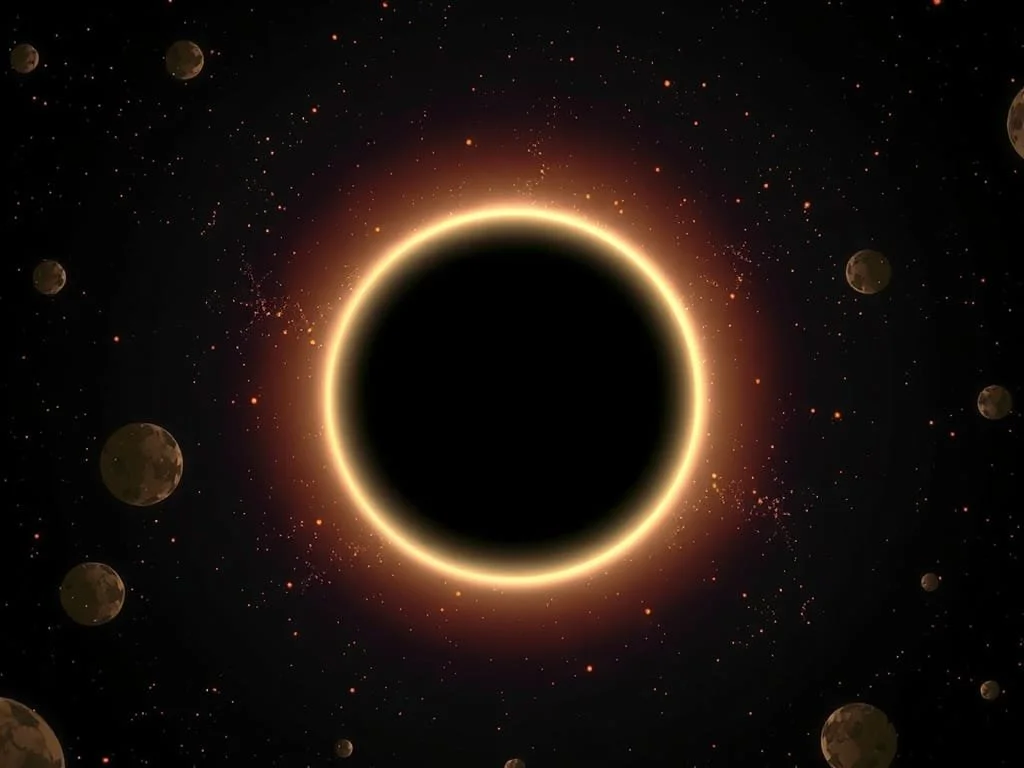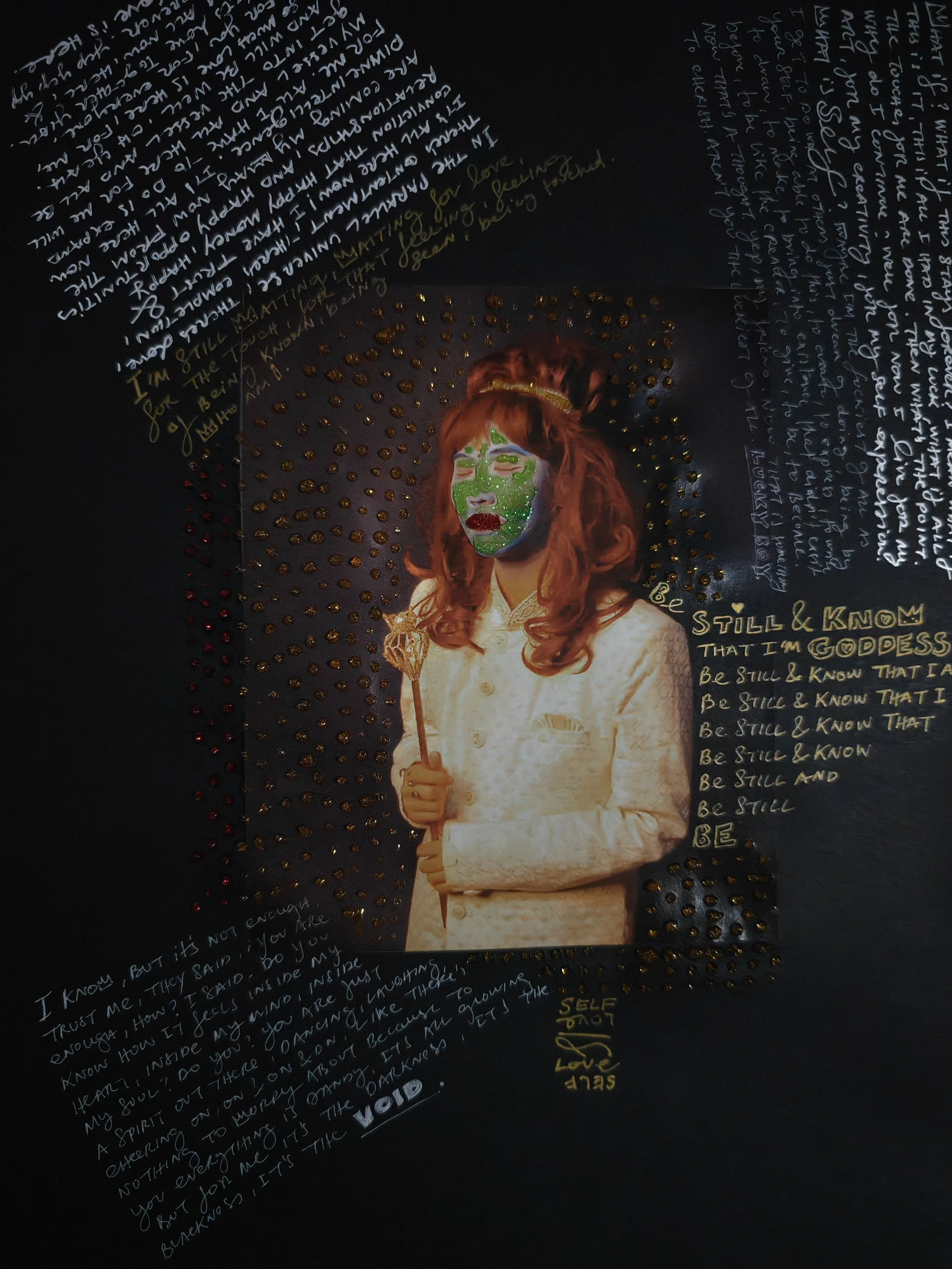Beyond the Lens: How a "Creative Oracle" Helped Me Unearth the True Heart of My Project
There are moments in a creative journey that feel less like steps and more like seismic shifts. Moments where the ground beneath you moves, and suddenly, the familiar landscape of your work reveals a breathtaking new vista. For me, that moment arrived a few weeks ago, during my Director’s Fellowship at the International Center of Photography, in a class that—without exaggeration—has become one of my favorite classes ever. My teacher, Sarah Blesener, isn't just an instructor; she's a true creative oracle, and her guidance has profoundly impacted my long-term project, "Love Like a Monster."
The Black Hole and the Sparkle
"We are here to find the core questions behind your work," Sarah began, setting the stage for a journey inward.
After a summer spent fully immersed in shooting, we were back, overflowing with photographs, archival materials, and a collective sense of being delightfully lost in our abundance. The challenge wasn't just what to do with it all, but why we were doing it.
Sarah introduced an exercise she called "BREAK THE BLACK HOLE OPEN." The premise was simple yet revolutionary: what we think our work is about at the outset is often just a vague concept, a surface-level idea, not the raw, pulsating core. To reach that core, we were asked to draw a black hole and then, using its negative space, free-associate with the key concepts of our work. Don't think deeply, she urged, just feel. What images, colors, sounds, memories, and dreams emerge?
For my project, "Love Like a Monster," my black hole held the words: "Identity, Transmutation, Transcendence, and Self Love." As I free-associated, a torrent of new words, tactile and vibrant, spilled onto the page. From this rich harvest, I chose five that resonated deeply: "Glow, Sparkles, Light, Blood, and Colors."
Then came the magic. We were tasked with taking one image from our project and, using these five words as lenses, create five new images of that same photograph. How does this image become when it is GLOW? SPARKLES? LIGHT? BLOOD? COLORS? We were encouraged to write, color, paint, rotate, collage, cut, sew, and re-photograph. To bring in smells, sounds, textures. It was an explosion of creative freedom, a visual deconstruction and reconstruction that felt utterly exhilarating. The images I created felt alive, infused with a new kind of energy. Here's a glimpse into that process, transforming one of my core images:
The Epiphany of Self-Love
Just when I thought I couldn't be more blown away, Sarah introduced the next exercise: "Free Write." Choose one image from your project, and for 25 minutes, write about it. The prompts were gentle invitations: What drew you to this image? How do you feel looking at it now? What happened before/after? What's beyond the frame? How does it speak to your long-term project? What questions emerge?
This was the rabbit hole. This was where everything clicked. As I wrote, a profound realization dawned on me. My project, "Love Like a Monster," about the Voidpunk counterculture in Hong Kong—where marginalized individuals reclaim their identities by embracing non-human avatars—was, at its heart, a project about me. About my self-love. About how witnessing their radical self-acceptance and creative rebellion inspired me to find my own.
This wasn't just an intellectual understanding; it was an emotional one, a deep tremor in my creative core. The Voidpunks, who visually transform themselves into mythical, cinematic, and luminous figures, embodying defiance and transcendence, had, in turn, shown me a path to my own. They were a mirror, reflecting a nascent self-love I hadn't fully recognized in myself.
A New Artist Statement, A New Vision
With this epiphany, my artist statement transformed. It became personal, vulnerable, and infused with the very journey I was documenting. It's no longer just about them; it's about us, a shared exploration of identity and mythology.
Here's my newly rewritten artist statement:
"When I first arrived in the Hong Kong megalopolis, it felt as if I had been dropped into a vibrant, real-world video game. Amidst the dizzying excitement, a profound loneliness took hold, and I began to question my own identity. It was then that I stumbled upon a community of artists and outcasts who called themselves Voidpunk—a radical movement where individuals reclaim their dehumanization by forging new identities as non-human avatars. Watching them inspired me, and their act of creative rebellion became the genesis of my project and a personal journey of profound self-love.
My photography project, "Love Like a Monster," documents and celebrates this defiant ethos. Using a blend of documentary realism and speculative fiction, I create luminous, cinematic portraits on medium format film. My approach is informed by a synthesis of influences: the intimate, painterly portraiture of Marie Cosindas, the rich and soft color palette of Christopher Anderson, and, most importantly, the themes of loneliness and alienation in the films of Wong Kar Wai. This creative lineage allows me to bridge the psychological landscapes of my collaborative partners with the physical landscape of Hong Kong itself.
My commitment to this project goes far beyond simple documentation. It is a deep, long-term exploration of identity and mythology. The use of analog film deliberately contrasts with digital creation, mirroring how Voidpunks draw inspiration from ancient Chinese deities while embodying futuristic personas. To capture their inner magic, I also employ a thermal camera to reveal the invisible body heat that manifests as they transmute the sacred energies of their deities, and experiment with inverted film negatives to capture the raw essence of Hong Kong.
As I immersed myself in this world, I experienced a profound personal transformation. Inspired by the very community I'm documenting, I am now turning the lens inward. In the final phase of this project, I will collaborate with Voidpunks to create my own voidsona. These self-portraits will become a testament to my newfound self-love, a visual manifestation of the journey from observer to participant—a final, collaborative act of becoming."
This journey, guided by Sarah Blesener's insightful wisdom, has been nothing short of miraculous. It's a testament to the power of looking inwards, of asking the deep questions, and of allowing the creative process to breathe, to flip itself upside down, and to ultimately reveal the hidden truths within us.
For all my fellow creatives out there, grappling with your own projects, searching for that elusive core, I urge you: break open your black holes. Free-write until your fingers ache. And most importantly, stay open. Open to experience, to contradiction, to being wrong, to being confused, to falling in love with your work and, ultimately, with yourself. The answers, the true heart of your visual storytelling, might just be waiting for you there.









